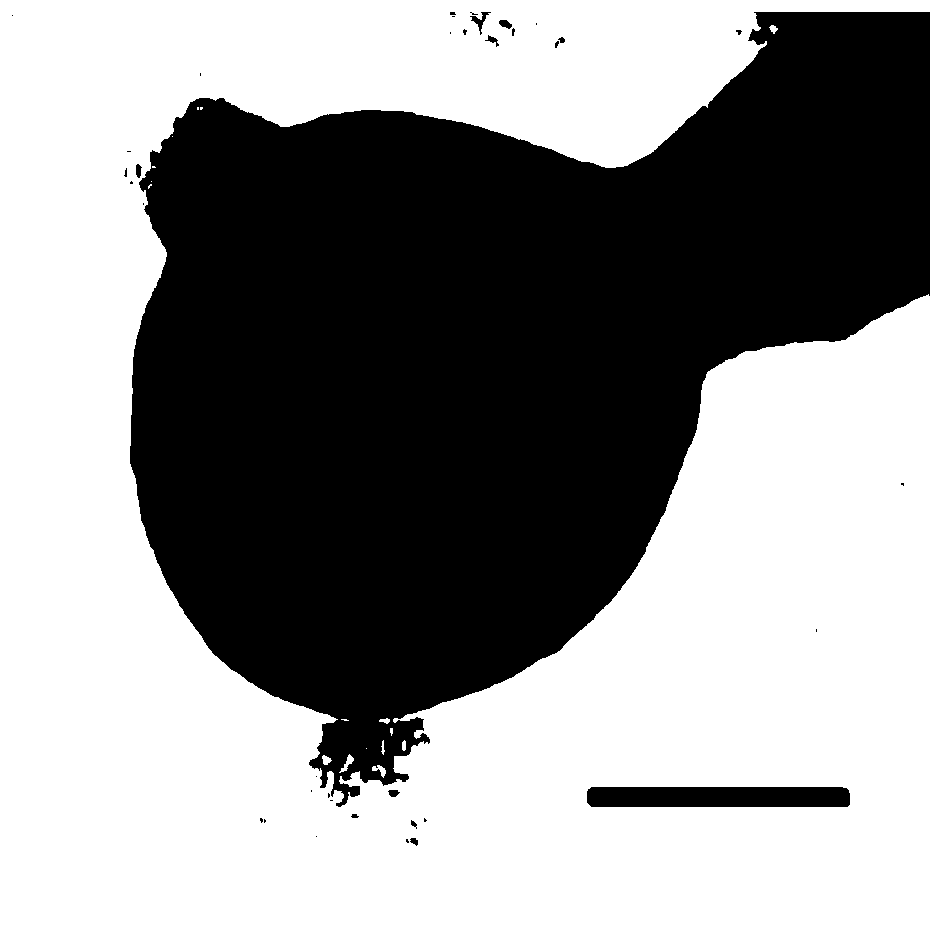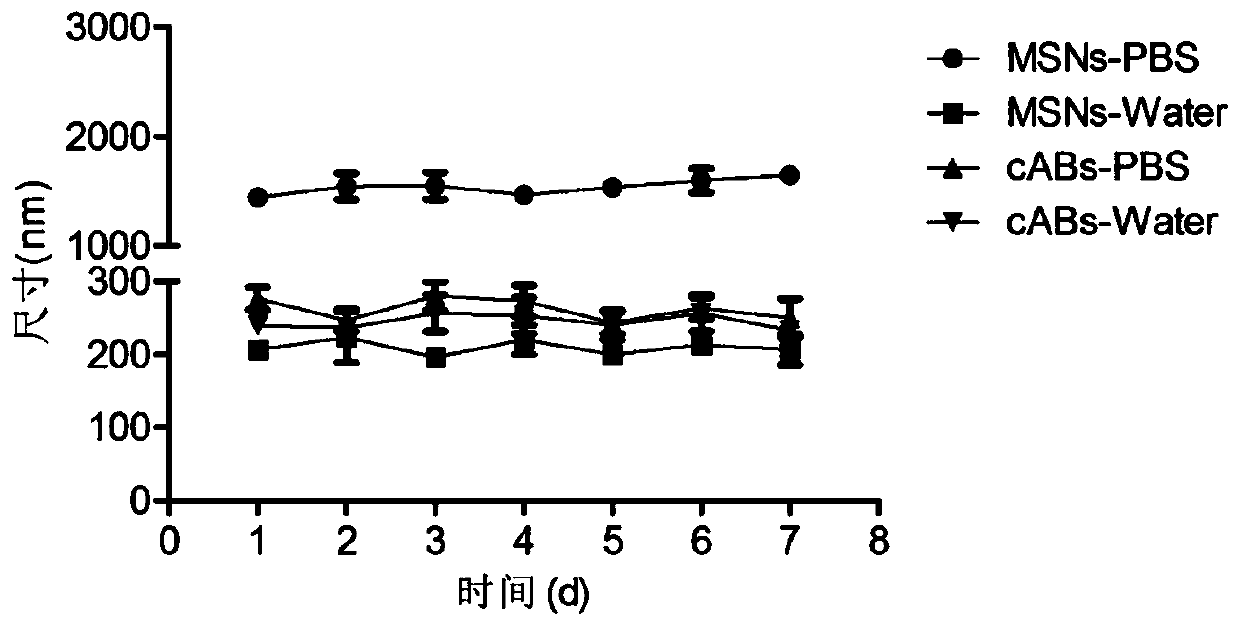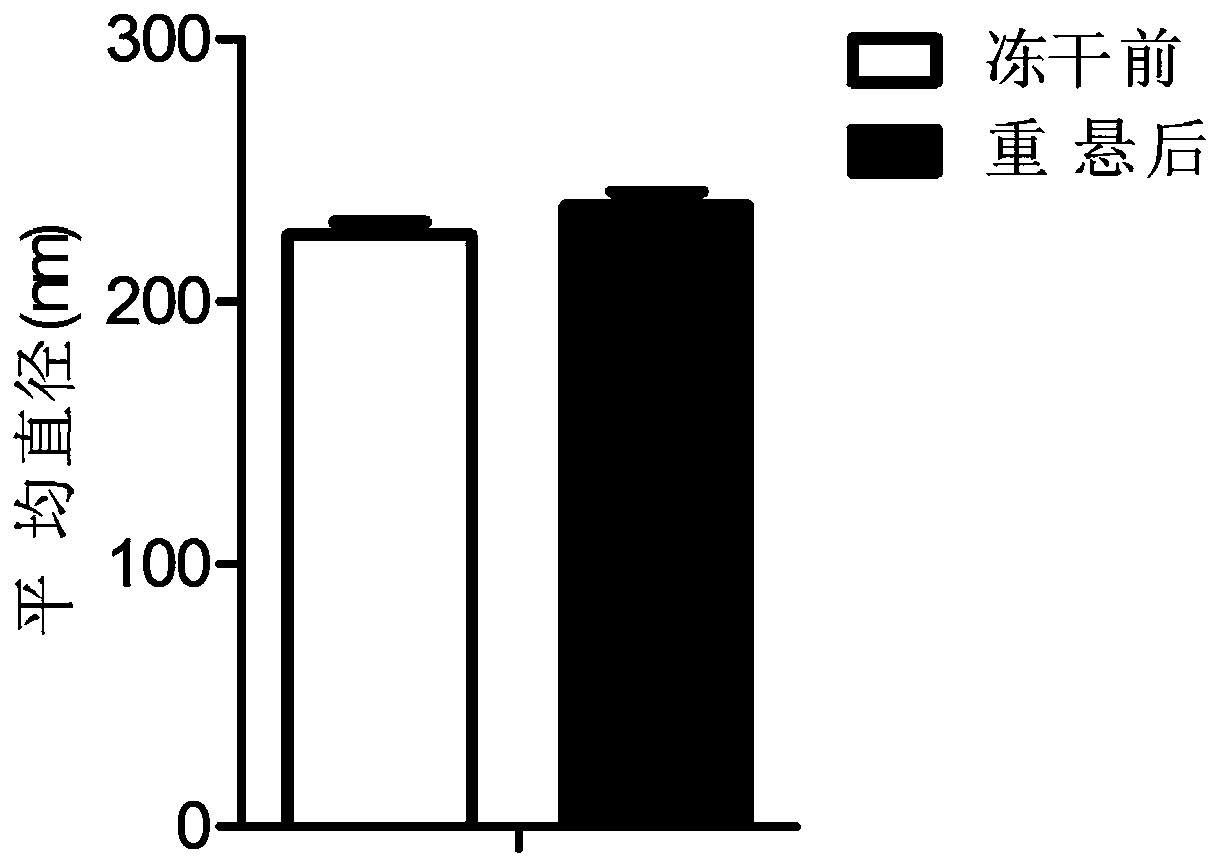Functional chimeric apoptotic body, and preparation method and application thereof
An apoptotic body and functional technology, applied in the biological field, can solve problems such as poor treatment, side effects, damage to other tissues and organs, and achieve poor results, improve delivery efficiency and utilization, and avoid off-target effects. Effect
- Summary
- Abstract
- Description
- Claims
- Application Information
AI Technical Summary
Problems solved by technology
Method used
Image
Examples
Embodiment 1
[0071] Example 1 Targeted responsive release system loaded with MicroRNA-21
[0072] A target-responsive release system is provided, the target-responsive release system comprises a chimeric apoptotic body, the chimeric apoptotic body comprises an apoptotic body membrane and is wrapped in the apoptotic body membrane The mesoporous silicon dioxide nanoparticles in the apoptotic body membrane is the apoptotic body membrane derived from T cells, and the mesoporous silicon dioxide nanoparticle is loaded with MicroRNA-21. In some embodiments, MicroRNA-21 is loaded on the mesoporous nanoparticles through electrostatic interaction or physical adsorption. In some embodiments, MicroRNA-21 breaks the disulfide bond through glutathione in the cytoplasm of the target cell, resulting in the release of MicroRNA-21 in the target cell. In a preferred embodiment, the MicroRNA-21 is labeled with Cy5.
Embodiment 2
[0073] Example 2 Targeted responsive release system loaded with curcumin
[0074] A target-responsive release system is provided, the target-responsive release system comprises a chimeric apoptotic body, the chimeric apoptotic body comprises an apoptotic body membrane and is wrapped in the apoptotic body membrane The mesoporous silica nanoparticle in the above, the apoptotic body membrane is the apoptotic body membrane derived from T cells, and the mesoporous silica nanoparticle is loaded with curcumin.
[0075] In some embodiments, after the curcumin is loaded in the pores of the mesoporous silica nanoparticles by physical adsorption, the mesoporous silica nanoparticles are encapsulated with polyglycerol dimethacrylate.
[0076] In some embodiments, the curcumin is released in the target cells responsively by degrading the poly(dimethylmethacrylate) by enzymes in the target cells.
Embodiment 3
[0077] Example 3: Preparation of apoptotic body membrane
[0078] 1. Isolation, activation and identification of T cells
[0079] Primary T cells were derived from C57BL / 6 mouse splenocytes and cultured in RPMI-1640 medium containing 20% FBS and 1% penicillin / streptomycin. First, 2 μg / ml CD3ε antibody was inoculated in a 6-well plate and incubated at 37°C for 4 h. Separate and take out the mouse spleen, grind the spleen fully with a sterile syringe handle, filter to form a cell suspension, add sterile erythrocyte lysate, gently blow and mix well, and lyse on ice for 10 minutes. Resuspend cells. Then filter the cell suspension with a 100 μm filter to remove cell clumps, add 2 μg / ml CD28 antibody and inoculate it into a 6-well plate pre-coated with CD3ε antibody, and cultivate T cells for 24-72 hours at 37°C and 5% CO2 After being activated, 1 μg / ml lipopolysaccharide was added to the culture system to act for 12 h to stimulate T cells. Morphological changes before and aft...
PUM
 Login to View More
Login to View More Abstract
Description
Claims
Application Information
 Login to View More
Login to View More - R&D
- Intellectual Property
- Life Sciences
- Materials
- Tech Scout
- Unparalleled Data Quality
- Higher Quality Content
- 60% Fewer Hallucinations
Browse by: Latest US Patents, China's latest patents, Technical Efficacy Thesaurus, Application Domain, Technology Topic, Popular Technical Reports.
© 2025 PatSnap. All rights reserved.Legal|Privacy policy|Modern Slavery Act Transparency Statement|Sitemap|About US| Contact US: help@patsnap.com



